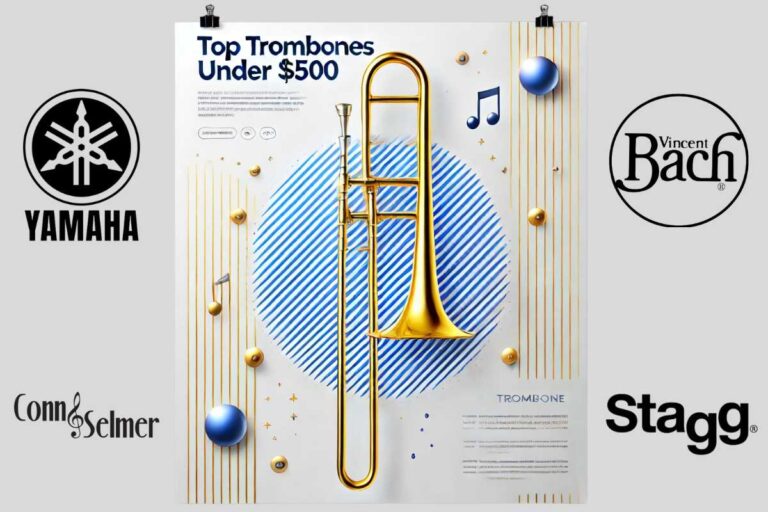Beginners Guide | How to Play Trumpet With 15 Best Tips
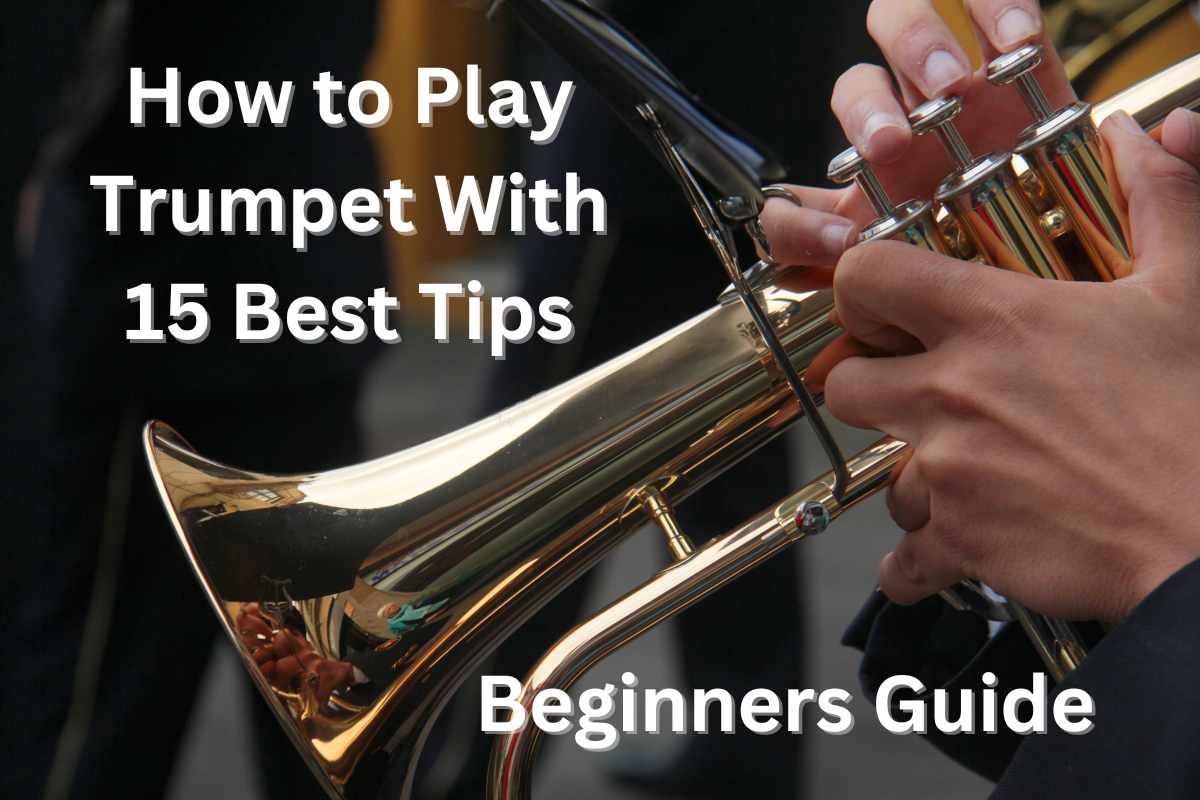
Hello there! In this guide, we have you covered with some helpful advice on how to play trumpet. Without proper guidance and techniques in place, getting started may seem challenging… …but fear not — our beginner’s guide will walk you through 15 trumpet playing tips and steps to START playing and provide links for further reading resources if that proves helpful! If this article appeals to you — then read on!!
How Long It Takes to Start Trumpet Playing
Becoming a skilled trumpet player requires understanding your personal definition of “good” and dedicating the necessary practice time.
With just an hour per week of practice sessions — quickly learn basic songs. Intermediate and advanced songs typically take one or more years (presenting new challenges throughout…)
Practice is key if you want to refine your trumpet skills. Dedicate at least 30 minutes a day to warm-ups, scales and songs as part of a daily practice session to hone current abilities (while mastering new ones) — soon you play even the most demanding songs!
As with learning any language, starting early to study music can only prove fruitful — no matter your age though! Your time and efforts invested are never wasted when studying this art form.
Check out our post featuring the 11 Best Trumpets for Beginners and Student Trumpets
1 Form Embouchure Muscles
To play trumpet, take a deep breath and exhale steadily with lips vibrate closed — no puffy cheeks! Stay close-lipped throughout…
Correct alignment between lips and teeth is VITALLY important. Moving your jaw forward helps align lips correctly by positioning the bottom lip directly under the top lip.

…Practice moving your jaw forward and backward while buzzing your lips to understand how that affects sound production.
Place the trumpet mouthpiece at the center of your lips, exhale slowly and continue vibrating your lips. …A honking noise means you are on track!
Place a tongue low for optimal airflow through lips when tonguing notes; allow airflow by resting it low when not tonguing notes.

Focusing on resonance will ensure a good tone is attained by keeping the mouth (and the tone!!) relaxed and open.
Leave at least 1/4″ (6 mm) of space between your teeth to allow airflow — cramping together could restrict this vital process.
For lower notes, vibrate your lips slowly; for high notes, vibrate them quickly.
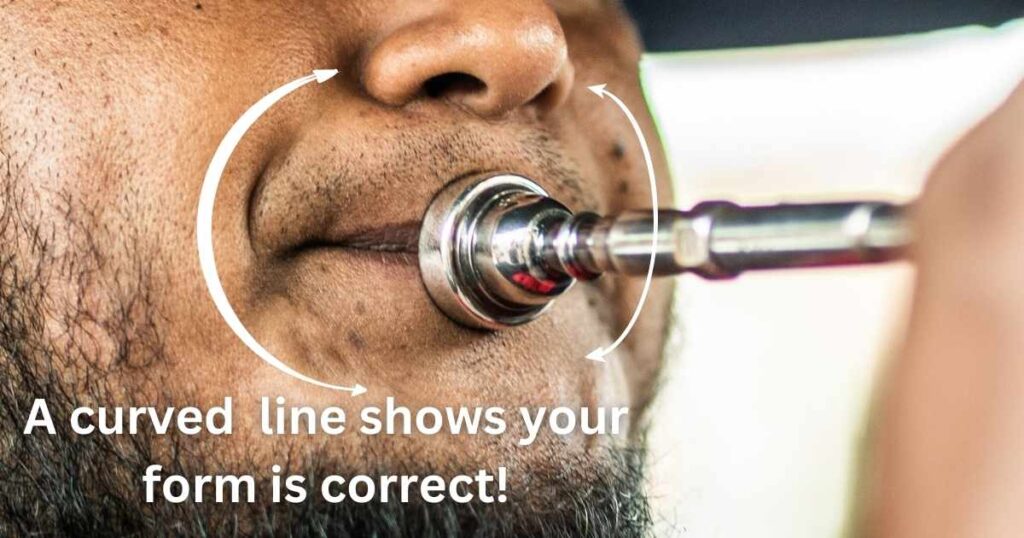
…Be careful when blowing and making a buzzing sound that you do not press firmly against your lips with the mouthpiece.
2 Proper Posture
Place both feet firmly on the ground. Align your hips vertically with your shoulders.
Bring the horn directly towards your face, not the face to the horn — this ensures an open throat and neck for better airflow and sound quality.
Maintaining good posture is SUPER important to perfecting an embouchure for optimal airflow when playing trumpet.

Lengthen the spine, keep your chest out and head up. A head up posture with a tucked chin in helps relax you while increasing performance. …especially while playing music.
Avoid pushing backward on your shoulders — this could make your chest protrude further. Try not tilting it forward either for added balance.
Maintaining an upright and relaxed position helps your breathing (by permitting maximum air intake and supporting breath control). Sitting up straight helps open your airways so you can hit all your notes with enough force.
To improve breathing, loosen up your body — particularly around your shoulders, neck and face. Muscle tension can restrict airflow…
…combat this effect (easily and safely!!) by rolling shoulders or neck.
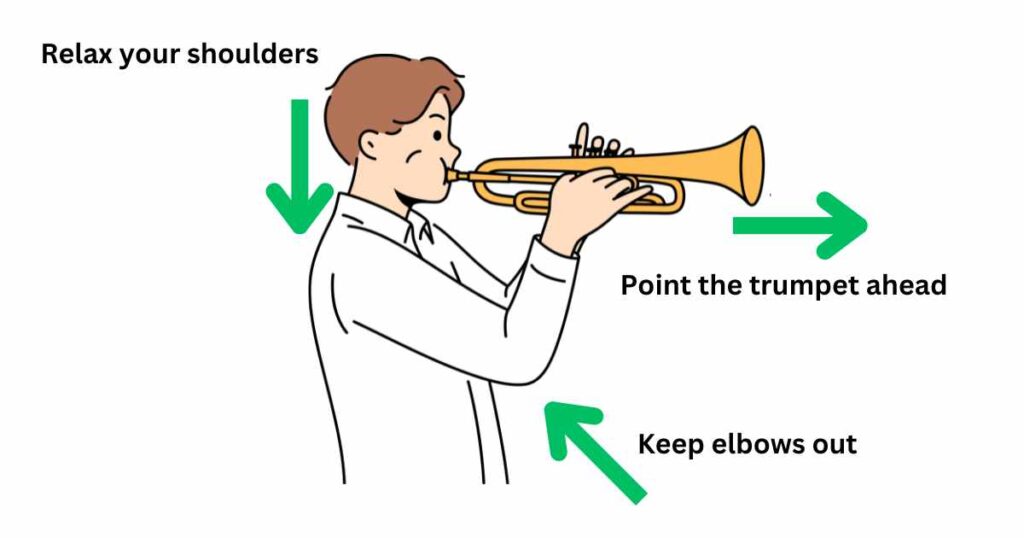
Avoid slouching and keep arms apart from one another, holding your instrument lightly — take several deep breaths before commencing playback.
Remember to stand or sit up straight and take deep breaths — fully expand your lungs for optimal playing experiences.
3 How to Hold The Trumpet
Left hand
Use your left hand to hold onto the trumpet, RELAX your shoulders and position your right hand without exerting too much force on its placement.
First, place the left thumb on a thumb rest or around the first valve casing and stretch all three fingers of your left hand across all three valves (with your index finger wrapped around the third valve casing)…
…Experiment with the other three fingers on your left hand to see which feels most natural to you.
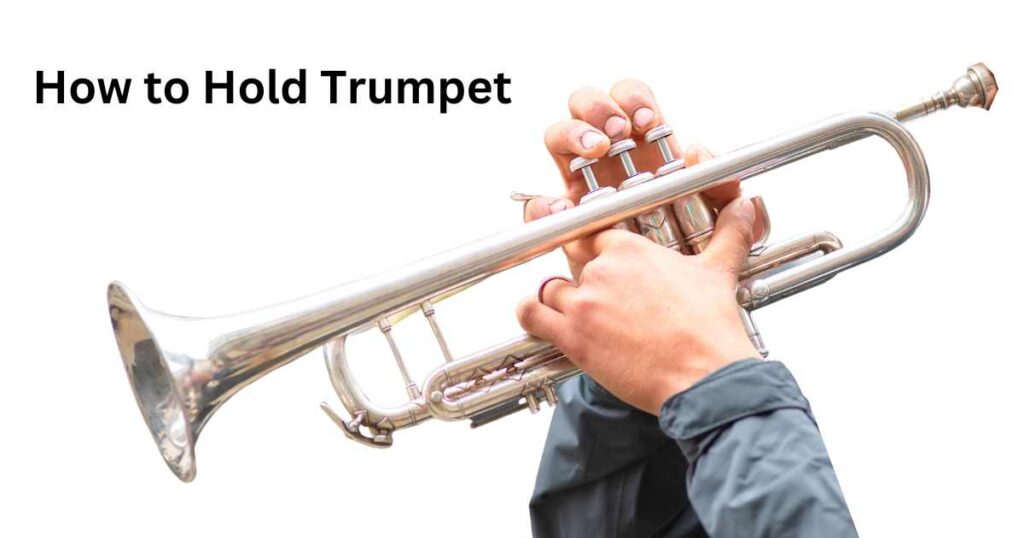
Simply thread your left ring finger through the hole on the third valve slide.
Avoid gripping the instrument too tightly — this could create unnecessary pressure and stress!! Find a position that feels good to you (it should provide a firm grip on the instrument) — this prevents dropping and keeps you stable while playing!
Make sure one finger is placed into the ring of the first valve slide to control its third valve slide; to maximize comfort — it would be best not to use your index finger for this process.
Right hand
Make a C shape with your right hand as a stabilizer to avoid tension or improper hand positioning — allow three of your fingers to rest atop each valve.
Curve your thumb between them for best results and do not place it directly in front of either valve — doing this allows three additional fingers to rest atop them comfortably.
Your pinky can either be on top of or float freely within a pinky ring when playing. Avoid placing it inside as that could increase mouthpiece pressure and diminish trumpet sound and endurance performance.
Making keeping your pinky out part of your daily practice helps relieve pressure from the mouthpiece while increasing finger independence and flexibility.
Maintain a firm yet relaxed grip when trumpet playing reps. Holding it TOO tightly could result in muscle cramps or fatigue — find your optimal playing position now!
Both hands play an instrumental role in keeping an instrument steady: one holds it against the lips while manipulating slides; while the other handles valve caps for extra support. Use the music stand for even better practice!
Check out this Yamaha post for some awesome tutoring video content
4 How To Read and Play the Trumpet Sheet Music
Musical Alphabet
Before diving into trumpet sheet music, becoming acquainted with the musical alphabet is ESSENTIAL!! This alphabet includes A B C D E F G notes that appear throughout a music staff in various positions. It allows one to gain an idea of which range of notes you cover by a trumpet.
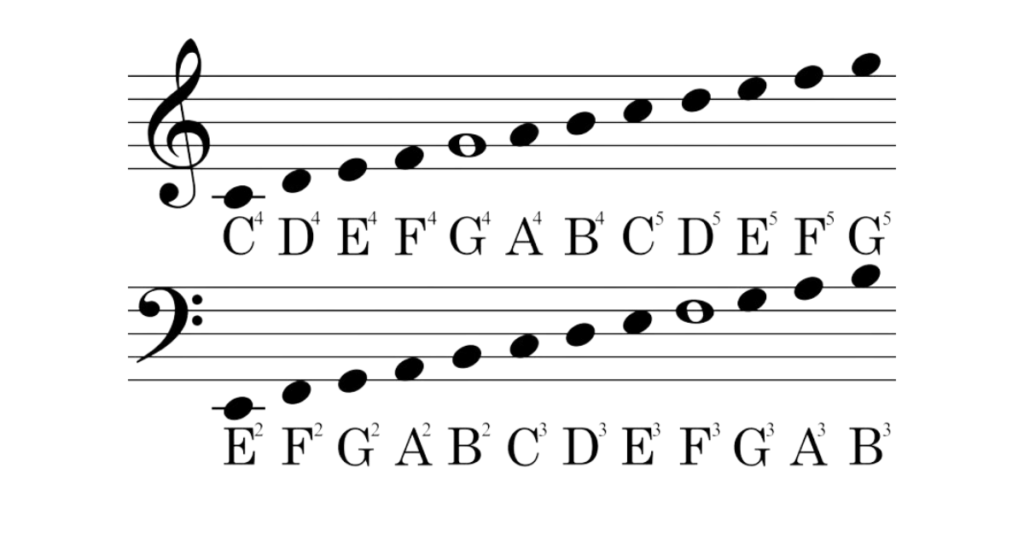
Music Staff
A music staff consists of five lines and four spaces where we write our notes, divided into measures to show their timing in song form. Different lines on these sheets contain symbols for notes with specific pitches and duration — when you see one on sheet music, you understand its pitch and duration to figure out where exactly to play it.
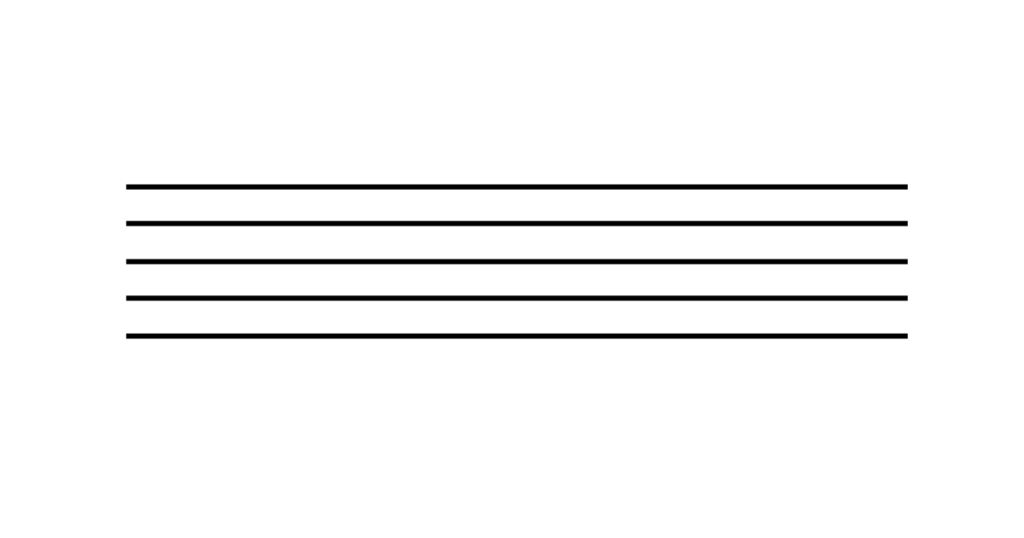
Treble Clef
Treble Clef A treble clef is a musical symbol designed to help musicians read sheet music more easily. Also referred to as a G clef due to where its “G” shows on a music staff, you’ll often encounter it when performing solo pieces, concert bands or orchestra music — don’t worry though…
…with practice comes ease in reading these symbols!
Time Signatures
Time signatures are used to represent the rhythmic structure of music. Each number (within the fraction,) represents how many beats per measure are heard at any one time and which notes receive one beat (such as quarter notes doling out one each measure).
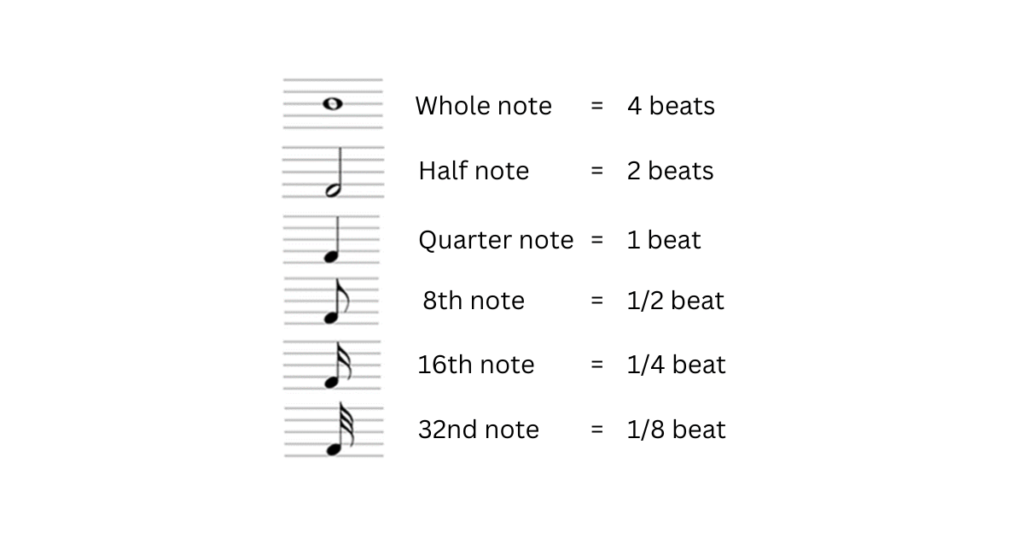
4/4 represents four beats in every measure and one quarter note will receive one beat. Other time signatures often used include 2/2, 3/4 or 6/8 time signatures — shown rhythm in music performance.
Key Signatures
It reveals which notes are sharp, flat or natural — it can help beginning trumpet players recognize which scale and mode are being utilized within an ensemble performance. You’ll usually spot this symbol at the start of sheet music for reference later. Gaining familiarity with different key signatures will enable them to identify scales or modes used within songs more readily.
5 Listen Critically to Yourself
Listen closely and you will pick up on ANY mistakes — even small ones! By correcting them you will improve the accuracy, rhythm and overall sound of your trumpet playing.
When you listen back to your recordings, pay particular attention to tone quality, intonation, timing and overall performance. Take notes of what sounds good (as well as any areas for improvement) that should be focused on during each practice session — gradually build upon your skill set!!
Instead of solely relying on external feedback for insight — rely on yourself and trust yourself when identifying areas to strengthen in your performance.
By paying careful attention to yourself and your performance, you can start understanding where improvements need to be made and tailor practice sessions accordingly.
As if all this wasn’t enough, by making it “objective” to evaluate your technique and pinpoint any areas for enhancement…

…this tool enables you to appraise it accurately!!
Learning to listen critically to yourself is an ongoing journey; feedback can be extremely useful — just remember to approach any feedback with an open mind and the desire to grow as much as possible. =)
6 Don’t Forget to Sing Before You Start Playing!
Singing is an incredible way to develop your ear training abilities and nail those pitches on the trumpet more effortlessly! Plus, singing helps strengthen ear training abilities — make your playing much smoother!!
Singing before playing can improve tone quality. It helps you release tension, take deep breaths, and project sound effectively. Singing engages all parts of your body to produce sound and then transfers over to trumpet playing for improved tone quality.
It improves breath control and extends playing sessions longer without becoming fatigued. By strengthening your lungs through singing — your trumpet playing will also benefit.
It also boosts confidence and decreases performance anxiety. Acclimtaize to your voice prior to performing for easier playing without fear. Singing helps build up comfort with yourself — so it becomes easier to perform with assurance.
7 Listening to Professional Trumpet Players is Essential
Better listening will enable you to better recognize and incorporate each element of trumpet playing into your playing style. Compare your sound against that of professional musicians for further development!!
Holding and positioning of the trumpet, embouchure placement and breath management — all play an integral part in creating its sound. By watching professional trumpet players — you will quickly pick up on how best to align yourself with those great musicians.
Classical, jazz and blues music all offer different vibes and techniques that create unique songs and styles. Explore professional trumpet players to experience diverse music styles — master interpreting each piece with individuality!
Listening to professional trumpet players will expose you to different styles and sounds; discover which elements work for you and create your own signature sound.
Discover 11 Amazing Trumpet Players to Inspire You in our latest post instantly – check it out now
8 Practice Plan is a Must for a Trumpet Player
Focusing is KEY! To stay focused when practicing, create clear goals and set plans — this helps limit distractions while keeping on course toward specific techniques.
Maintain realistic expectations about your trumpet progress. Be mindful to track your achievements, create achievable goals and remain enthusiastic during your learning journey.
Practice plan will enable you to establish consistency. Make time each day, commit yourself and watch as muscle memory enables faster progress with trumpet skills development.
Create a practice plan tailored specifically for you to increase confidence — make progress and notice positive aspects! It will leave you feeling awesome!!
A effective practice plan is another key to relieving stress — break your sessions down into manageable chunks for stress-free trumpet playing sessions! Craft an in-depth plan designed specifically to maximize each of your trumpet sessions!
9 Find a Trumpet Teacher and Online Course
No matter where your trumpet playing experience lies, finding an instructor or online course suitable to your level and goals is IMPORTANT. If you have played for under two years, chances are good you need a beginner level teacher!
There are various resources to help you learn to play trumpet, including video tutorials, music sheets, practice exercises and online forums for feedback and support. Some even provide live or prerecorded sessions so you can access learning anytime — Get going today!

When seeking out private lessons or online courses, be mindful to include your budget into the equation.
Before choosing a trumpet teacher or online course, review feedback from former students. They offer invaluable insight into one teaching style, personality and effectiveness.
10 Learn Trumpet Parts
The trumpet’s key components include — a mouthpiece, valves, slides, finger hooks and a bell section. You blow into its mouthpiece while its valves and slides control pitch; finger hooks help with finger placement and its sound comes from its bell.
Learning the influence each valve, mute and slide has on tone quality helps create more pro and distinctive music. Check out our latest post for an in-depth breakdown on the Top 15 trumpet Parts you Should Know
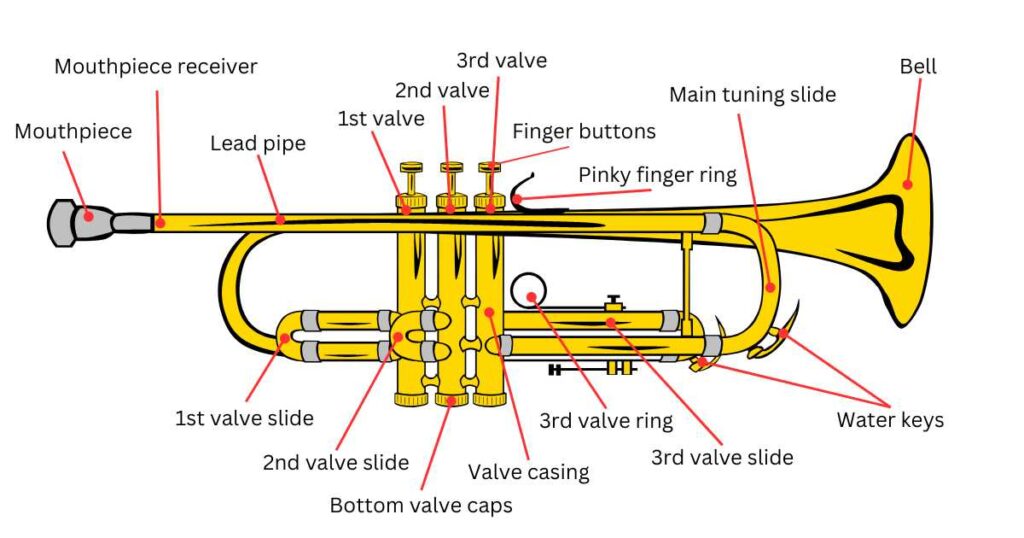
Take time to familiarise yourself with all of your instrument’s parts — take it apart, experiment with mutes and slides and gain an understanding of how each works.
Trumpet player need to know how to identify problems quickly and resolve them on their instruments, whether with valves, tuning slides or anything else that affects performance… If something appears amiss on their instrument — trumpet player should have an ability to spot these problems quickly before resorting to costly repair efforts.
11 Trumpet Assembly
Assembling an instrument is simple — just drop in your mouthpiece with a slight twist!
Before opening the case — put it on the floor ( not on your lap or bed instead…). Hold onto the lead pipe with one hand while turning it with your thumb — there won’t be any mistakes to fix that way!
Your left ring finger should slide into the 3rd valve ring while index and middle fingers should be between it and the 3rd valve itself. Position your thumb next to the 1st valve saddle.
Hold the mouthpiece securely with your right hand and use your left to gently insert and twist its shank into a lead pipe — give a quarter turn clockwise to ensure a tight seal. Do not force or hit it — this could result in it getting stuck.
Avoid forcefully pushing or pulling on the mouthpiece to reduce stickiness and use only appropriate tools when necessary — like a mouthpiece puller. You risk irreparable damage otherwise.
12 How to Maintain a Trumpet
Spending just 30 minutes weekly cleaning your horn will significantly enhance its playing capabilities. Oiling, greasing and polishing the valves, slides and mechanics regularly — crucial…
Keep these on hand in order to properly care for your trumpet — a dry rag, slide grease and valve oil.
Apply a small amount of grease to the tuning slide — spread it evenly across its surface. Apply grease on visible parts of other slides; before screwing back the valve caps to their respective casings — ensure they are dry. Oil each valve separately and place them back into their respective casing.
Once all the valves have been properly set up, make sure your trumpet sounds properly before giving it another go — any problems arise, you seek assistance from a pro instrument repair person immediately.
Add several drops of oil into each valve while tilting the trumpet — move up and down as necessary before flipping it and coating its inside evenly with oil.
To clean a mouthpiece, soak it in warm soapy water, use a brass mouthpiece brush on both the interior and exterior surfaces. Rinse well under warm running water; dry with clean warm water.
13 How To Tune a Trumpet
As temperature affects pitch — warming up is key to proper tuning of your trumpet. Physically prepare yourself and ensure the instrument does not become cold before beginning this step.
Tuning your trumpet using either an electronic tuner or a tuning app is straightforward and efficient. Chromatic tuners recognize all notes for an easier tuning process. Start up your electronic trumpet tuner, position it out of view so it will not distract…
Play a steady C note with strong, full sound — keep the pitch constant while looking at your tuner. Verify that it accurately detects this pitch; non-trumpet tuners may display concert pitch (A#/Bb).
The note is sharp If the needle points right. If it indicates that its pitch exceeds the needed levels — adjust by pulling out its main tuning slide.
If the needle points left — a note is flat (its pitch has dropped lower…). Adjust the trumpet length by pushing in on its main tuning slide so as to increase pitch and raise note levels.
Continue with this process until the tuner needle has settled into the center position.
14 How to Clean and Empty Valve
Be respectful when draining the water from your instrument — considerate of others as you empty out its contents.
Don’t blow into your horn to empty it out — hold open its spit valve and allow its contents to drop freely out. Blowing can cause water to be drawn back up the tubing and be harder to extract later…
Avoid emptying while playing music to preserve the atmosphere (particularly during quiet parts). Instead, fill up discreetly and respect others when cleaning out.
Find an area that won’t disturb anyone — avoid emptying while someone else is talking (that would be impolite…). Holding the valve close to the floor might help reduce the noise as well.
Once you hear that familiar gurgly sound — quickly empty out that valve elsewhere near important items like music notes, water bottles, walkways or rugs.
15 Keep Your Trumpet in the Case When Not Playing It
Store trumpets in sturdy cases that protect them from harsh environments. A case is an effective way of keeping dirt, moisture and damage at bay for delicate valves — remember ALWAYS to clean and lubricate before storage to prevent oxidation or valve freezing issues!!
What For?
Student instruments can easily become damaged through accidents like being knocked over, falling off music stands or being sat upon. Trumpet cases should have secure locations for their mouthpieces — loose mouthpieces can dent tubing and alter valve functions, potentially rendering your trumpet inoperable.
…Avoid plastic covers to safeguard silver-plate finishes from becoming damaged. Avoid extreme temperatures and humidity conditions for long-term storage.
…After all, a climate controlled unit protects your investment (just as other brass instruments like a trombone or french horn) while saving on repairs!
How to Play Trumpet: Conclusion
By following these 15 trumpet playing tips, it should be easier for anyone to begin learning how to master this instrument. From learning how to assemble and hold your instrument properly to understanding basic music theory concepts and playing using proper technique — these steps will provide a solid basis for your musical journey. With practice and dedication you could soon be making beautiful melodies! So get out there and begin making music – who knows — you could even become Miles Davis or Chet Baker one day! Good luck with it!






